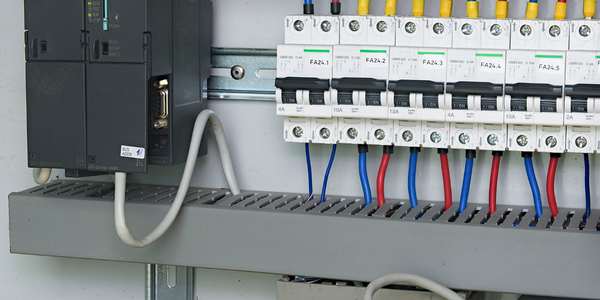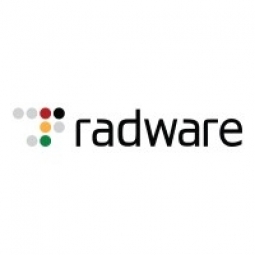Customer Company Size
Large Corporate
Region
- America
Country
- United States
Product
- Radware’s Alteon ADC
Tech Stack
- Application Delivery Controller
Implementation Scale
- Enterprise-wide Deployment
Impact Metrics
- Cost Savings
- Customer Satisfaction
Technology Category
- Application Infrastructure & Middleware - Data Exchange & Integration
Applicable Industries
- Electronics
- Software
Applicable Functions
- Business Operation
Use Cases
- Process Control & Optimization
Services
- System Integration
About The Customer
Hewlett-Packard, headquartered in Palo Alto, California, is the world’s largest technology company offering a portfolio that spans from printing, personal computing, software, services and IT infrastructure to help solve customer problems. Ranked in the top ten of the 2012 Fortune 500 companies, HP serves more than 1 billion customers in more than 170 countries on six continents. Supporting the top 200 banks and more than 130 of the world’s major stock exchanges, Hewlett-Packard has been providing companies with cloud solutions, security and risk management, information optimization and quality products and has been leading the technology world since 2007.
The Challenge
Hewlett-Packard, the world’s largest technology company, was in need of a solution that could reduce application infrastructure costs, support higher application SLA, and improve application quality of experience. With a large product and service portfolio serving billions of customers, the company required a solution that was cost-effective, advanced, and comprehensive. The challenge was to find a solution that could handle the scale of HP's operations and provide a high level of service to its extensive customer base.
The Solution
Hewlett Packard chose Radware’s Alteon ADC solution over F5 to provide customers with the most advanced and comprehensive solution in today’s market. HP uses Radware’s Alteon ADC to support applications in regards to health checks, Layer 7 traffic redirection and caching. Primarily supporting two applications per ADC, Hewlett Packard can continue to add more customers and applications due to the flexible and virtual capabilities of the Alteon ADC. The Alteon ADC solution created a flexible, cost-effective and virtual environment for HP’s industry leading solutions.
Operational Impact

Case Study missing?
Start adding your own!
Register with your work email and create a new case study profile for your business.
Related Case Studies.

Case Study
Remote Temperature Monitoring of Perishable Goods Saves Money
RMONI was facing temperature monitoring challenges in a cold chain business. A cold chain must be established and maintained to ensure goods have been properly refrigerated during every step of the process, making temperature monitoring a critical business function. Manual registration practice can be very costly, labor intensive and prone to mistakes.

Case Study
Predictive maintenance in Schneider Electric
Schneider Electric Le Vaudreuil factory in France is recognized by the World Economic Forum as one of the world’s top nine most advanced “lighthouse” sites, applying Fourth Industrial Revolution technologies at large scale. It was experiencing machine-health and unplanned downtime issues on a critical machine within their manufacturing process. They were looking for a solution that could easily leverage existing machine data feeds, be used by machine operators without requiring complex setup or extensive training, and with a fast return on investment.

Case Study
Cloud Solution for Energy Management Platform-Schneider Electric
Schneider Electric required a cloud solution for its energy management platform to manage high computational operations, which were essential for catering to client requirements. As the business involves storage and analysis of huge amounts of data, the company also needed a convenient and scalable storage solution to facilitate operations efficiently.

Case Study
Leveraging the IoT to Gain a Competitive Edge in International Competition
Many large manufacturers in and outside Japan are competing for larger market share in the same space, expecting a growing demand for projectors in the areas of entertainment, which requires glamor and strong visual performance as well as digital signage that can attract people’s attention. “It is becoming more and more difficult to differentiate ourselves with stand-alone hardware products,” says Kazuyuki Kitagawa, Director of Service & Support at Panasonic AVC Networks. “In order for Panasonic to grow market share and overall business, it is essential for us to develop solutions that deliver significant added value.” Panasonic believes projection failure and quality deterioration should never happen. This is what and has driven them to make their projectors IoT-enabled. More specifically, Panasonic has developed a system that collects data from projectors, visualizes detailed operational statuses, and predicts issues and address them before failure occurs. Their projectors are embedded with a variety of sensors that measure power supply, voltage, video input/ output signals, intake/exhaust air temperatures, cooling fan operations, and light bulb operating time. These sensors have been used to make the projector more intelligent, automatically suspending operation when the temperature rises excessively, and automatically switching light bulbs. Although this was a great first step, Panasonic projectors were still not equipped with any capability to send the data over a network.









